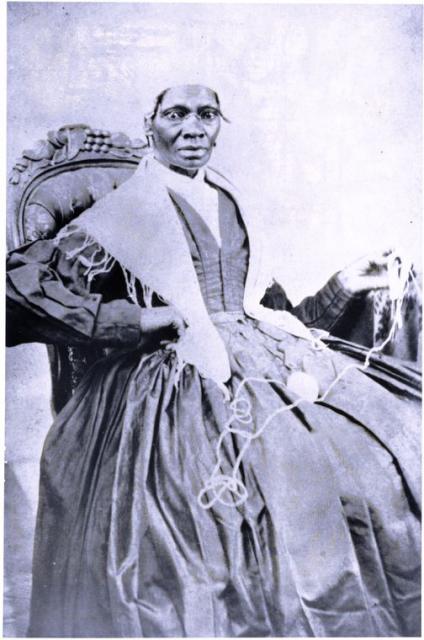
Abolitionism
Art denotes strategy, ingenuity, and imagination. Abolitionists of all stripes participated in the cause, prompted firstly by the refusal of African captives to abide slavery’s many violences. Enslaved people worked slowly, fought back, and set plantations aflame, giving pause to enslavers. They fellowshipped with one another and created kinship networks, despite all efforts to break their spirits and resolve to live and love. Self-liberated fugitives from slavery banded together as well as with freepersons to establish maroon, mocambo, and quilombo settlements in hills, valleys, swamps, and mountains. As instances of insurrection intensified on ships in the Middle Passage and across the Atlantic World, objections to the institution of slavery by social reformers and everyday citizens also increased, reaching fever pitch by a diversity of anti-slavery proponents in the nineteenth century.
Sojourner Truth
Photographer Unknown
Circa 1860s
Sojourner Truth (1797–1883) was born enslaved in Ulster County, New York. In 1826, she escaped the bonds of slavery with her infant daughter in tow and successfully sued to gain custody of her minor son. She later became an outspoken abolitionist and suffragist, giving the famous address known as the “Ain’t I a Woman” speech in 1851 before the Ohio Women’s Rights Convention in Akron, Ohio.
Sojourner Truth Portrait Collection Sub-Collection, Portrait Collection
Photographs and Prints Division. Schomburg Center for Research in Black Culture, The New York Public Library, Astor, Lenox and Tilden Foundation






